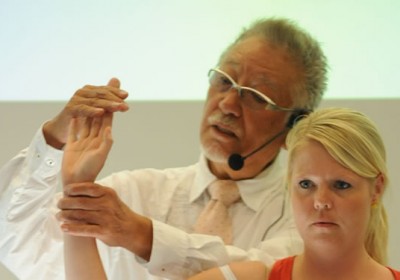6630 McGinnis Ferry Road Suite B
Johns Creek, GA 30097
TEL : 678-473-0552
FAX: 678-473-0656
E-mail : [email protected]
- Call678-473-0552
- Email[email protected]
Description
Active Release Technique, or ART, is a patented, state of the art soft tissue system/movement based massage technique that treats problems with muscles, tendons, ligaments, fascia and nerves. Headaches, back pain, carpal tunnel syndrome, shin splints, shoulder pain, sciatica, plantar fasciitis, knee problems, and tennis elbow are just a few of the many conditions that can be resolved quickly and permanently with Active Release Technique. These conditions all have one important thing in common: they are often a result of overused muscles.
How do overuse conditions occur?
Over-used muscles (and other soft tissues) change in three important ways:
- acute conditions (pulls, tears, collisions, etc)
- accumulation of small tears (micro-trauma)
- not getting enough oxygen (hypoxia)
Each of these factors can cause your body to produce tough, dense scar tissue in the affected area. This scar tissue binds up and ties down tissues that need to move freely. As scar tissue builds up, muscles become shorter and weaker, tension on tendons causes tendonitis, and nerves can become trapped. This can cause reduced range of motion, loss of strength, and pain. If a nerve is trapped you may also feel tingling, numbness, and weakness. This is where Active Release can be extremely helpful. Active Release Technique can treat the scar tissue as well as the nerve symptoms. Other therapies may takes months to correct these problems, Active Release can usually correct them in anywhere from 1 to 10 visits.
What is an Active Release (ART) treatment like?
Every Active Release session is actually a combination of examination and treatment. The Active Release (ART) provider uses his or her hands to evaluate the texture, tightness and movement of muscles, fascia, tendons, ligaments and nerves. The Active Release provider treats the abnormal tissues by combining precisely directed tension with very specific patient movements.
These treatment protocols – over 500 specific moves – are unique to Active Release Technique. They allow the Active Release provider to identify and correct the specific problems that are affecting each individual patient. Active Release Technique is not a cookie-cutter approach.
Project details
- Categories:



